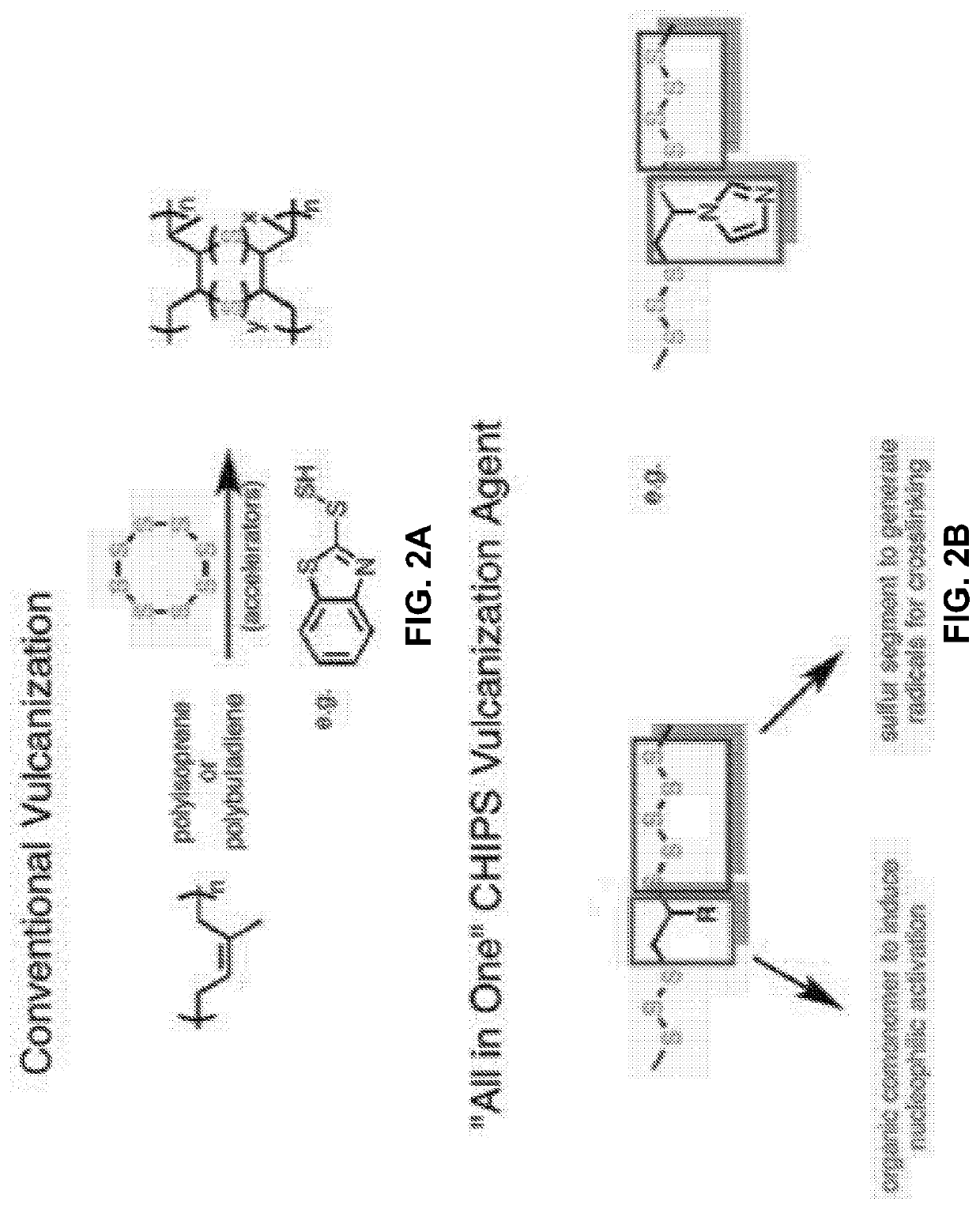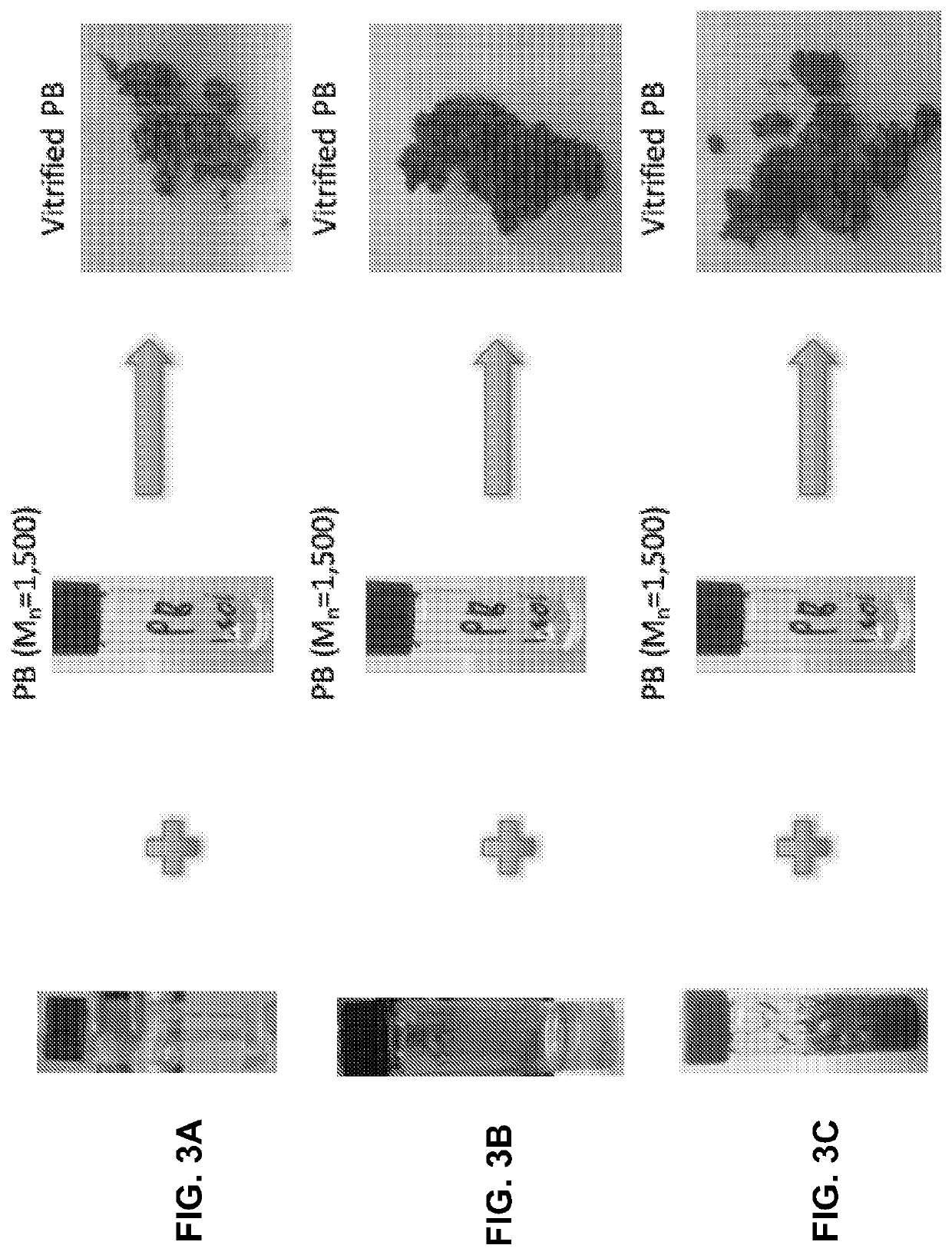Chalcogenide hybrid inorganic/organic polymer (CHIP) materials as improved crosslinking agents for vulcanization
- Summary
- Abstract
- Description
- Claims
- Application Information
AI Technical Summary
Benefits of technology
Problems solved by technology
Method used
Image
Examples
example 1
of poly(Sulfur-random-Styrene) or p(S-r-Sty) CHIP
[0084]Referring now to FIG. 4, to a 20 mL glass vial equipped with a magnetic stir bar, S8 (3.50 g) was added and heated to 130° C. in a thermostatic oil bath until a clear yellow molten phase was formed. Styrene (1.50 g) was added and the reaction was stirred at 130° C. for 6 h yielding an orange fluid. The complete consumption of styrene was confirmed by 1HNMR spectra.
example 2
of p(S-r-vinylimidazole) CHIP
[0085]Sulfur (0.7 g) and vinylimidazole (0.3 g) were added to a small vial equipped with a stir bar. The vial was lowered into a thermostatic oil bath and the reaction was stirred at 130° C. for 2 h. Upon completion of the reaction a black tar-like substance was present in the vial.
example 3
of p(S-r-4-vinylaniline) CHIP
[0086]Sulfur (0.25 g) was placed in a small vial equipped with a magnetic stir bar. The sulfur was melted in a thermostatic oil bath at 130° C. Using a syringe, 4-vinylaniline (0.25 mL) was added to the molten sulfur and the reaction was stirred at 130° C. for 20 min. Upon completion of the reaction, a red glassy solid remained in the vial.
PUM
| Property | Measurement | Unit |
|---|---|---|
| Temperature | aaaaa | aaaaa |
| Time | aaaaa | aaaaa |
| Temperature | aaaaa | aaaaa |
Abstract
Description
Claims
Application Information
 Login to View More
Login to View More - R&D
- Intellectual Property
- Life Sciences
- Materials
- Tech Scout
- Unparalleled Data Quality
- Higher Quality Content
- 60% Fewer Hallucinations
Browse by: Latest US Patents, China's latest patents, Technical Efficacy Thesaurus, Application Domain, Technology Topic, Popular Technical Reports.
© 2025 PatSnap. All rights reserved.Legal|Privacy policy|Modern Slavery Act Transparency Statement|Sitemap|About US| Contact US: help@patsnap.com



